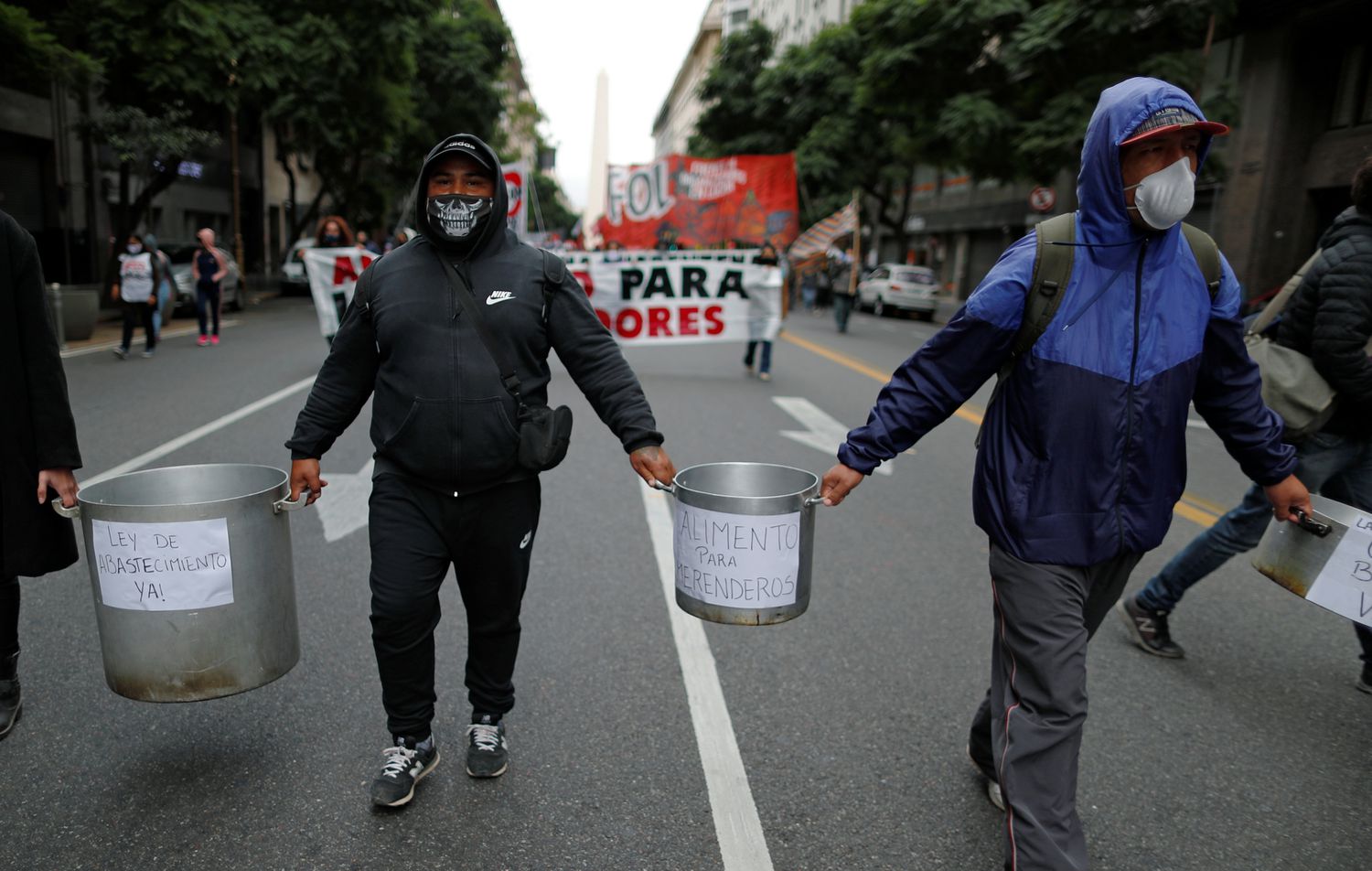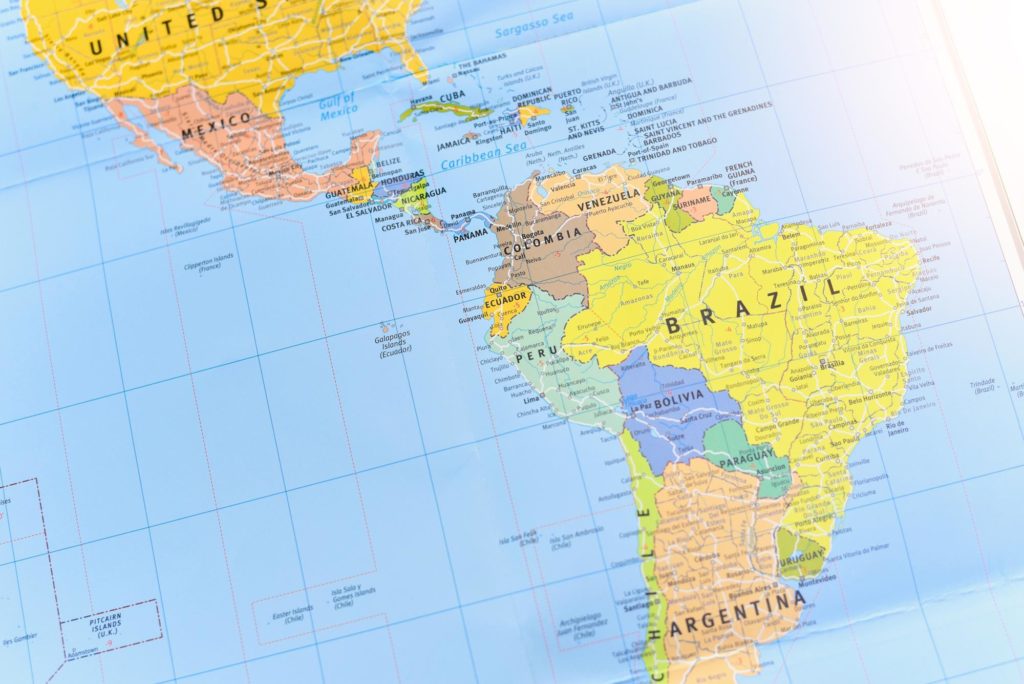RIO DE JANEIRO, BRAZIL – A mountain of debt at the end of this pandemic awaits governments spending to mitigate its economic impacts. According to the World Bank’s most recent data, Latin America and the Caribbean totaled a combined foreign debt of US$1.87 trillion (R$10.5 trillion) in 2018.

Even before the advent of Covid-19, the International Monetary Fund (IMF) cautioned about the risks of this growing debt, but now, for many countries, debt is the only option to provide their citizens with what they need to survive while the virus hinders paid work.
If anyone expects the international community and multilateral organizations to help the wealthiest countries rescue the neediest, the facts point in the opposite direction. Each government is so committed to serving its people that there is neither the time nor the will to organize a plan like the one implemented in Europe after the Second World War. Such a plan would not even work, critics say, because the world today is different from the post-war world.
The debt tends to be seen as a buffer, a blow-absorbing device, explains Alejandro Izquierdo, senior advisor to the Research Department of the Inter-American Development Bank (IDB). “This justifies using the buffer at such a critical time. On the other hand, we have to demand that governments reduce spending and become more efficient, because otherwise, the youths will have to pay for it”.
Latin America has a poor track record when it comes to spending its money. A survey by Izquierdo and his peers shows that each year Latin American and Caribbean governments’ inefficiency in spending generates a total loss of US$220 billion, equivalent to 4.4 percent of regional GDP. This means that at times of global crisis and pandemic, increasing spending does not necessarily translate into an economic rebound.
The IDB has singled out three spending components that, while they may have been well-intentioned, are typically a bottomless drain on governments: targeted transfers, lack of transparency in public procurement, and high employee compensation.
“It makes sense at this time for the debt to increase, but I believe that there is also a responsibility that must be asked of governments: that in the future this additional spending should not become permanent spending, and that it should work on efficient spending so that fiscal surpluses that reduce the extent of debt may eventually be achieved,” says Izquierdo. “Citizens have a right to demand this because, otherwise, future generations will always be paying for the damage.”
Mexico, the second-largest economy in the region, stands out for its reluctance to increase its indebtedness to cope with the economic shutdown triggered by the pandemic. The country enjoys healthy finances and a manageable fiscal deficit, so if it wanted to, it could run up more debt.
What Latin America expects
The region will suffer the worst economic contraction in its history this year, according to the Economic Commission for Latin America and the Caribbean (ECLAC). The blow will be a drop of 5.3 percent in GDP. The International Labor Organization (ILO) estimated last month that the pandemic has already destroyed at least 14 million jobs in the region.
The scenario is such that wartime comparisons are ubiquitous, and in line with European authorities, Mexican President Andrés Manuel López Obrador called for the establishment of a new Marshall Plan, referring to the transfers of resources from the United States to European countries in 1948, as post-war aid and to be spent exclusively on economic reconstruction programs.

Is there a historical precedent that can help the region to overcome this crisis?
“I’m afraid the answer is no,” replies Adam Tooze, economic historian, author, and professor at Columbia University in New York. “Because we’ve never really had an experience like this.”
After the 2008 and 2009 global financial crisis, the Chinese government reacted with a massive public spending package to boost its economy, and this helped the countries from which it buys raw materials, such as Brazil, Argentina, and Chile. But this time, Beijing did not announce a similar package, which seems bad news for these Latin American nations. The export market is a crucial engine of the global economic machine, notes Tooze, and is facing significant uncertainty today.
“As for the issue of being able to restore the growth engine, we simply have no experience with a shock of this magnitude happening simultaneously around the world,” he added. “It’s terrifying. It’s extraordinary. And I believe it’s important to be realistic about the magnitude of this shock.”
Faced with a lack of options, Latin Americans must demand that their governments make the debt worthwhile. In other words, that spending is efficient, transparent and, above all, temporary, because there is a risk that the State will settle for a higher level of spending and that it will be up to the younger generations to pay off the debt with high tax burdens in the future.
The rescue that won’t come
The UN also called for wealthy countries to offer emerging economies, such as Latin Americans, a bailout similar to the Marshall Plan and, in their recent meetings, the boards of the International Monetary Fund (IMF) and the World Bank (WB) were close to negotiating a global bailout fund for the neediest economies – but the US blocked it.
“I am critical of the Marshall Plan’s nostalgia, and the people who advocate for the Marshall Plan model radically underestimate the very different context in which it was launched,” Tooze says. “The plan was launched in a world where there was no private debt at all. The existing debt was from government to government and included a clear control of the balance of payments.”
The world is different today, says Tooze, author of the book ‘Crashed: How a decade of financial crises changed the world.’ Governments not only receive loans from other governments or multilateral organizations, such as the IMF and WB, but they also issue debt bonds to private banks and international funds.
The case of Argentina demonstrates the vulnerabilities of this private debt: today, despite having reached an agreement on its debt with the IMF, it is the private creditors who refuse to receive lower payments for a US$66.24 billion debt. Argentina’s debt is equivalent to about 90 percent of its GDP, a level that the IMF describes as “unsustainable.” On Friday, a US$503 million bond matures that creditors do not expect to receive.
According to Tooze, the risk of a Marshall Plan rescue package today is that the money will be used to pay off what is owed to banks and private funds, rather than to promote economic reconstruction measures. In other words, when a country receives a transfer of relief funds, a country that owes money to a bank could spend those funds on its interest payments rather than investing in infrastructure or economic reactivation programs.
So, as the UN points out, any support exchange would have to include capital control measures, so that it would not end up in the coffers of a private bank on Wall Street. Kenneth Rogoff, a former chief economist for the IMF and professor of economics and public policy at Harvard University, agrees and strongly advocates for a suspension of debt payments from emerging countries, including payments to private creditors.
Source: El País

